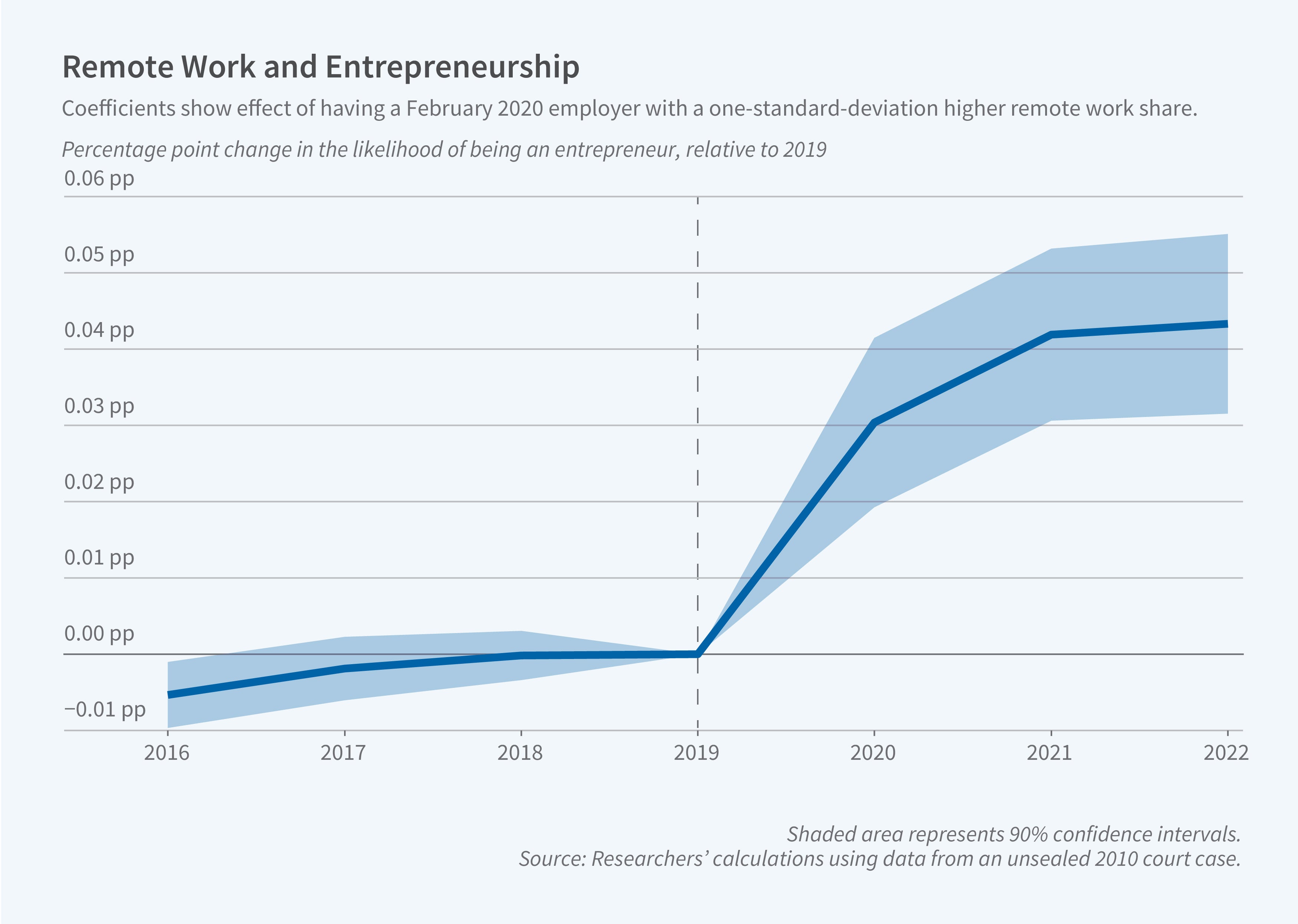Remote Work and Employee Transitions to Entrepreneurship

The widespread transition to remote work during the COVID-19 pandemic fundamentally altered workplace arrangements. Full work-from-home days accounted for 28 percent of paid workdays in the US by 2023, four times higher than the 2019 level. This shift may affect entrepreneurial activity since most entrepreneurs transition from wage employment to launching a business, and workplace frictions can influence that path.
In Entrepreneurial Spawning from Remote Work (NBER Working Paper 33774), Alan Kwan, Ben Matthies, Richard R. Townsend, and Ting Xu investigate whether working remotely increases the likelihood that a worker will transition from wage employment to entrepreneurship—a process known as entrepreneurial spawning. The study employs novel data to create firm-level remote work measures.
Employees at firms with higher shares of remote workers during the COVID-19 pandemic were more likely to start their own businesses.
The researchers track approximately one-fifth of the world's IPv4 addresses and classify them as business, residential, mobile, or VPN. They then calculate, for each business, the percentage of its work-hour internet traffic originating from remote locations. They match this information to LinkedIn employment histories from Revelio Labs. This allows them to track job transitions for individuals who worked at US firms with between 10 and 5,000 employees in February 2020. They follow the spawning activities of these workers through December 2022.
A worker at a firm with a 1-standard-deviation higher share of employees working remotely is 5 percent more likely to start a business during the study period. The spawning probability rises from a mean of 0.337 percent to 0.353 percent. To address the concern that firms adopting remote work might already employ more entrepreneurial individuals, the researchers stratify firms by the average pre-pandemic commute distance for a firm's employees. The reason is that firms with longer employee commutes pre-pandemic were more likely to adopt remote work during the pandemic, and this source of variation in work-from-home penetration would not be correlated with workers’ entrepreneurial proclivity, conditional on the level of pre-pandemic spawning and remote work.
This estimation strategy yields a much larger estimate for the effect of working from home: a 1-standard-deviation increase in the share of remote work at a firm raises workers’ spawning likelihood by 0.28 percentage points to over 0.61 percent. The effect persists when conditioning the analysis on workers who changed jobs, suggesting remote work specifically directs employees toward entrepreneurship rather than simply increasing general job turnover. Among job switchers, a 1-standard-deviation increase in firm-level remote work increases transitions to entrepreneurship by 30 percent. The researchers estimate that at least 11 percent of the post-pandemic increase in new firm entry can be explained by remote work–induced spawning.
The businesses created by the entrepreneurs who were induced to spawn by remote working are of higher quality than the typical new firm. The initial employment of remote-work-spawned firms is about 38 percent higher, and the likelihood that these firms receive venture capital funding is about 171 percent higher, than for the typical new firm.
The researchers conjecture that remote work provides time and downside protection needed for entrepreneurial experimentation by reducing commuting time, increasing flexibility, and offering less employer monitoring. Consistent with this view, the spawning response is stronger in industries with higher failure rates, where the option value of experimentation while maintaining wage employment is greater.


